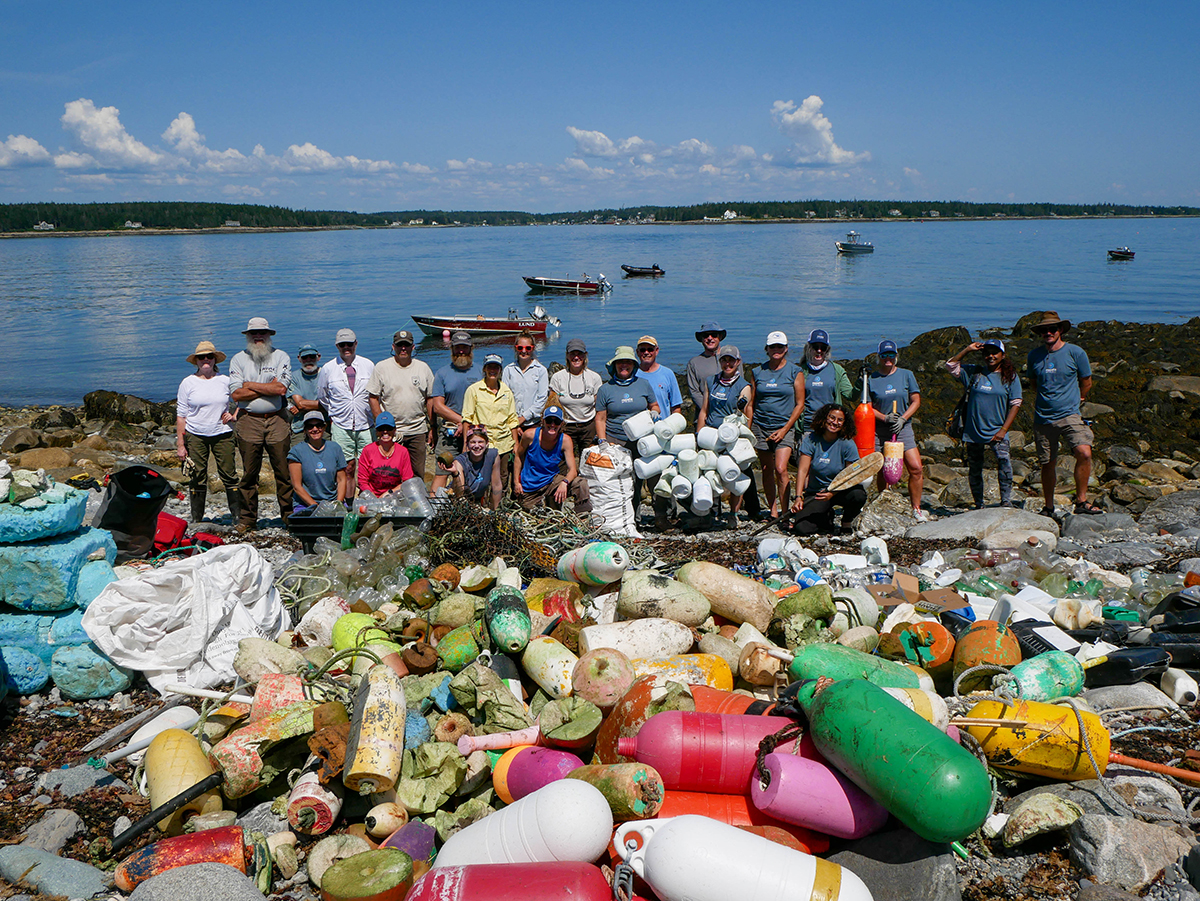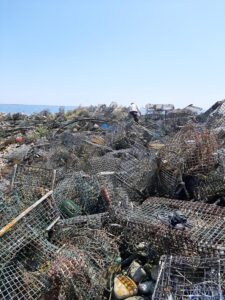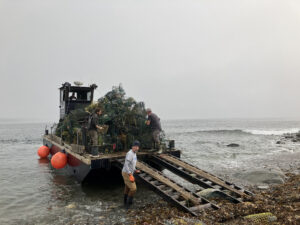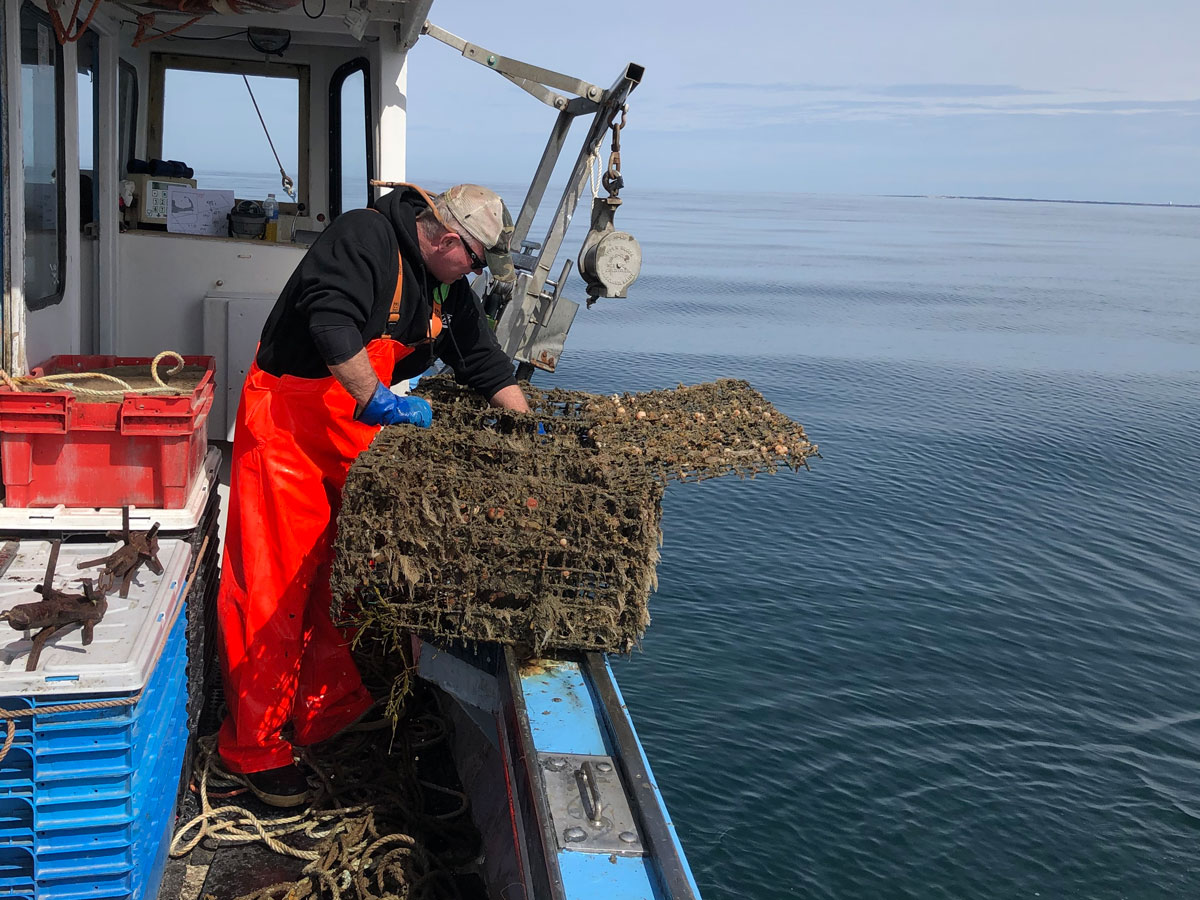Impacts of Marine Debris on Birds in the Gulf of Maine Region: Project Report and…

Marine Debris Impacts on a Maine Seabird Nesting Island: National News Coverage and Clean-up Efforts

Fisheries managers estimate that 175,000 wire lobster traps are lost annually in the Gulf of Maine. These 50lb traps and associated rope, buoys, and ballast scour the ocean floor and often end up coming ashore on coastal islands, headlands, and shorelines. As noted in the 2022 document, Identifying and Addressing the Impacts of Marine Debris on Birds in the Gulf of Maine (‘bird report and framework’), drafted by USFWS and partners, seabirds are known to become entangled in this gear and it can adversely affect their nesting habitat. Fisheries debris is particularly ubiquitous throughout the Gulf of Maine. On Maine’s offshore islands, cleanup efforts are often extremely challenging due to their remoteness, logistics of getting people ashore, and volume and weight of debris that requires removal.
In July, USFWS staff were joined on Maine Coastal Islands National Wildlife Refuge’s Hart Island, by a news crew from PBS NewsHour to highlight the environmental impacts of marine debris on seabird nesting islands. Several partners involved in developing and implementing NOAA’s Gulf of Maine Marine Debris Action Plan were interviewed about marine debris impacts on wildlife and the environment, and described actions being taken to address the problem in the region. This news story supported outreach goals outlined in the Action Plan as well as those included in the bird report and framework.

In August, a group of staff and volunteers from Maine Coastal Islands National Wildlife Refuge, Maine Island Trail Association, Rozalia Project, Center for Coastal Studies and the Gulf of Maine Lobster Foundation teamed up to begin removing marine debris from Hart Island. The shoreline of this 13-acre island is covered in debris, including over a thousand lobster traps. Hart Island supports nesting gulls and common eiders, and staff have documented seabirds entangled in the wire traps annually. Cleanup crews used a hydraulic trap crusher to reduce the size of the wire traps and facilitate removal from the island. During this initial clean-up effort, 206 lobster traps were crushed (weighing over 9,000 pounds!), and 550 pounds of rope and over 1,600 foam buoys and plastic bottles were gathered. In September, volunteers returned to the island to load the debris onto a barge for transport back to the mainland. While a substantial amount of debris remains on Hart Island, Refuge staff and partners are planning another clean-up in 2024.
Contact: Linda Welch (linda_welch@fws.gov)



